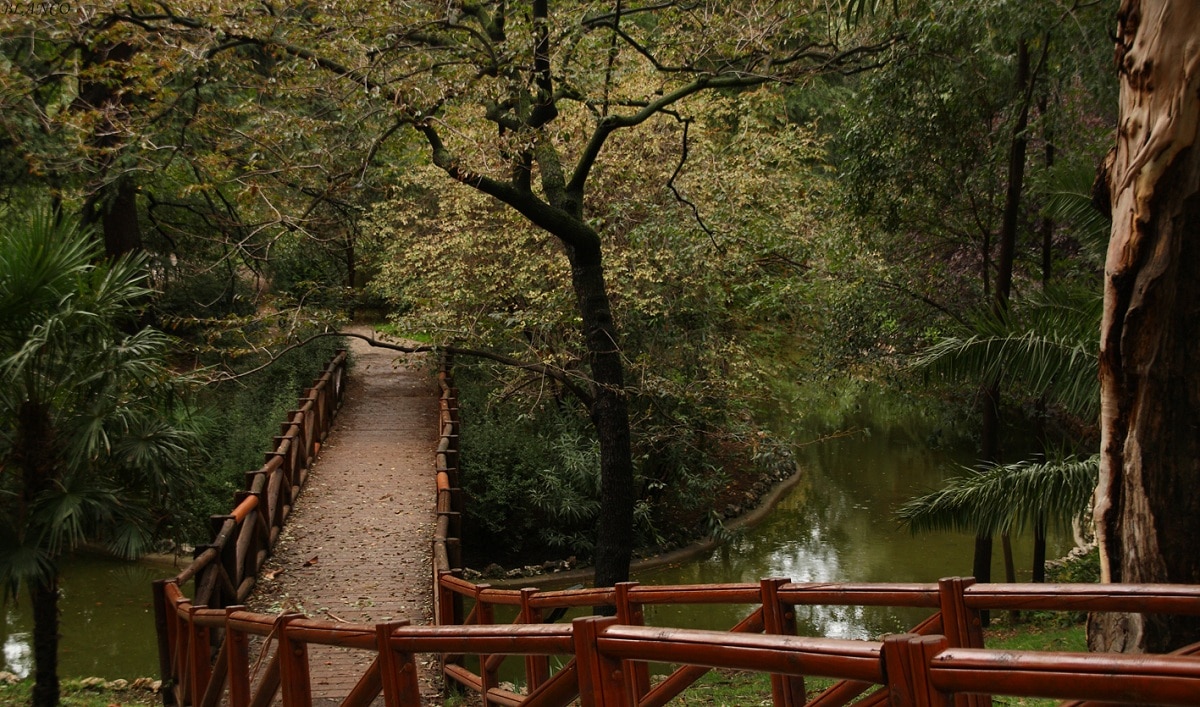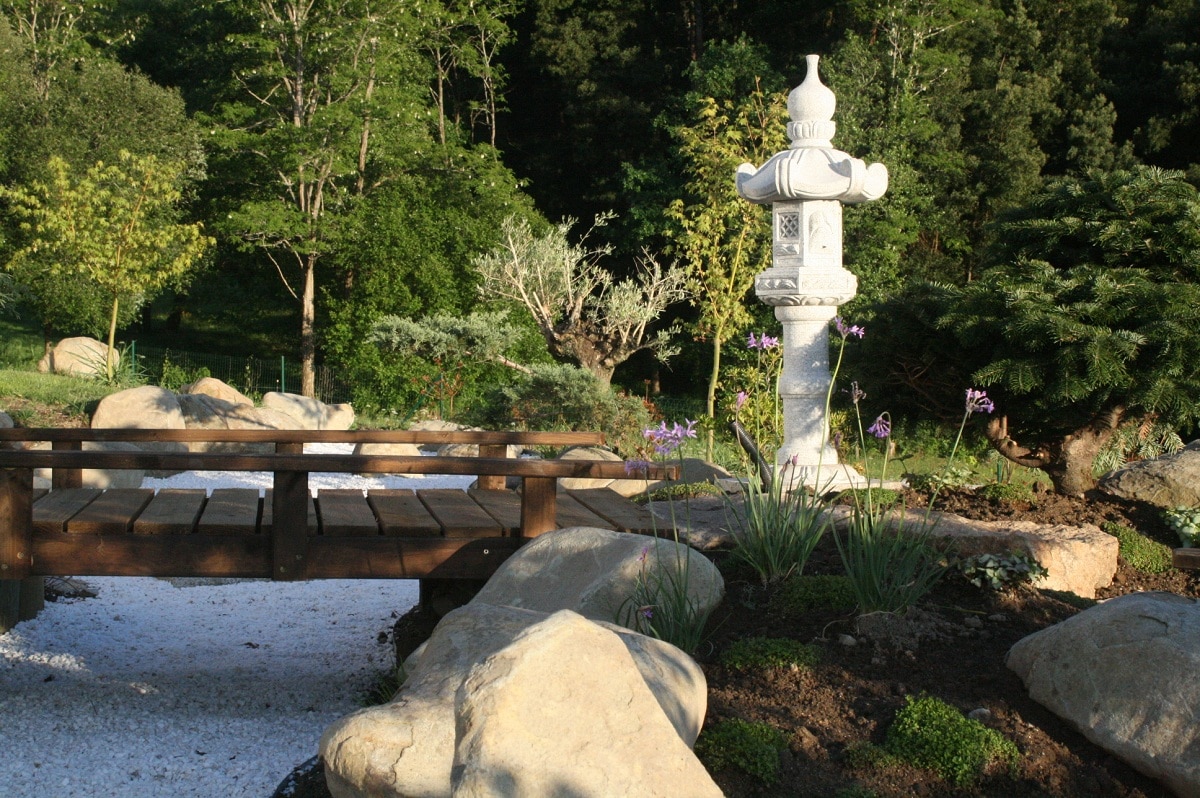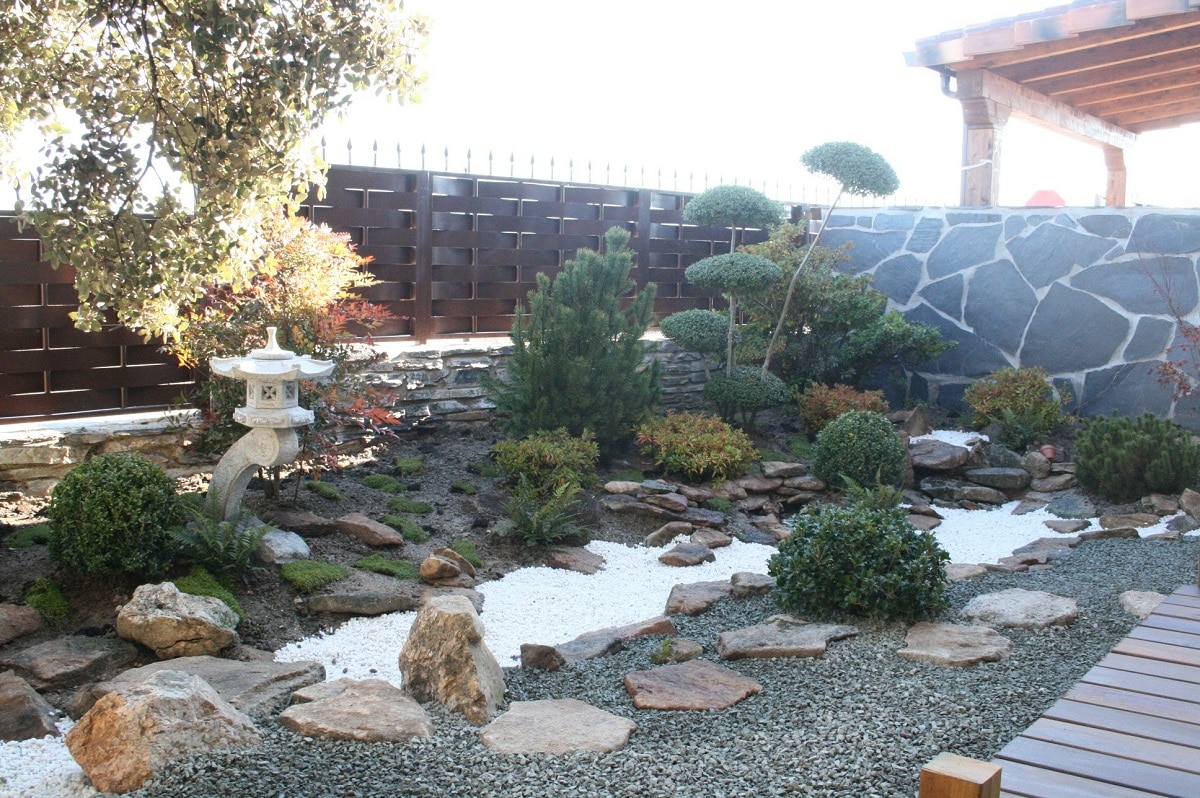
When we talk about a Japanese garden we mean a space that is dedicated to spirituality and aesthetics. In these types of places, shapes and colors come together to create a perfect architectural balance considered a cultural icon for humanity. We have the Madrid Japanese garden whose beauty is incalculable and is gaining more and more fame within the Japanese tradition. It is quite common to see gardens of this style than many of the upper class private dwellings as well as in temples, chapels and castles in the East Asian area.
In this article we are going to tell you all the characteristics, curiosities and elements of the Japanese garden in Madrid.
Main characteristics of the Japanese garden of Madrid

If you are one of the people who is continuously stressed by work and can afford to do something different that gives you peace, the best thing is to go to the Japanese garden in Madrid. It is a place where you can find a good stress-relieving therapy that it will help you forget about the obligations and routines of day to day. There are excursions to the Japanese garden in Madrid that have a route sent where they teach you everything you need to know about plants and Japanese style within the garden.
The great advantage that this type of garden provides is that you can meet numerous species of trees that are cultivated with great care and you can stop to admire their beauty. The Taoist monks of China have cultivated this type of tree for hundreds of years with the main objective of can reach the maximum age in fullness and balance between body and soul. Today the level of stress is much more generalized in the population. Therefore, this type of garden can greatly help reduce stress.
These monks yearned with fervor to live forever. They had a belief that was based on if people lived in harmony with nature they could become immortal. The litmus test was to be able to keep a potted tree and whoever succeeds would have the doors open for eternity.
The Japanese museum in Madrid is dotted with beautiful rose gardens, Arab gardens, Japanese gardens, fruit trees, olive trees, palm gardens, and many other wonderful gardens. In addition, throughout the park, visitors can leisurely stroll along pleasant paths decorated with canopies and other climbing plants. Beauty is the main weapon of this Garden of Eden. It also has a small lagoon and a fountain decorated with fountains, where the flow of the water produces almost hypnotic sounds.
Treasures and relics of the Japanese garden of Madrid

One of its most beautiful treasures is the pagoda, which contains an exact replica of the Bell of Peace in the United Nations Building in New York. In the middle of this quiet place is the Bonsai Museum, which is a temple dedicated to this ancient technique using trees, in which all participants They will be able to enter and discover more than 300 types of precious bonsai planted in it.
Japanese gardens have their roots in the tradition of Japanese national private houses. Stone, water, bamboo, black pine, are common elements in this type of space. The Japanese garden of Madrid was created from a detailed study of these land traditions and a great effort to transfer it to the urban environment in a respectful and loving way.
What does a Japanese garden have?

The Japanese garden is one of the oldest traditions in Japan and has been sold all over the world. The garden protection service has been adapted to traditional gardens such as Buddhist temples or Shinto chapels, but due to the popularity of zen gardens, has also successfully entered our country.
You must bear in mind that the Japanese garden tries to bring a part of nature to the home environment, that is why it is a closed garden, as if it created a microcosm of nature inside, with the aim of bringing peace and tranquility to the house . This type of garden is usually enclosed with natural elements (such as rattan bamboo, heather, rattan or hedge). The elegance and magnificence they are two elements that go hand in hand with spirituality and serenity in this landscape. For this, care and maintenance are of the utmost importance, otherwise its essence would be lost.
More than anything, a Japanese garden represents culture, religious and philosophical ideas. For this reason, although we can define certain styles, there is no single model for their design, since it is a reflection of the soul of its creator, as any artistic work it would be.
Philosophical principles
As we have already said, Japanese gardens are designed to represent nature or the universe so that they can live in harmony with the family environment, so their composition is governed by philosophical principles derived from nature.
- Minimalist design: In Japanese gardens, emptiness plays an important role. The game between emptiness and the elements is a symbol of yin and yang, day and night, black and white, good and evil. The open area symbolizes water, while the plants constitute "fullness."
- Unstable balance: Sakutei-ki is a XNUMXth century text that establishes the basic principles for creating a garden with these characteristics, which determines that the entire garden must develop around the principle of an unstable balance between man and heaven and earth. The idea is to look for the beauty in the imperfections of the disease in natural conditions. This type of garden also requires specific pruning services.
Depending on its design, the Japanese garden can be explained from two different perspectives of topography or geography. In this way, the landscape can be considered to represent a group of islands that surround a part of the ocean. ero can also be interpreted as the same universe, that is, the universe, represented as a huge gap, which in our previous interpretation was the ocean. This void is surrounded by celestial bodies that were previously islands.
I hope that with this information you can learn more about the Japanese garden of Madrid and what are the characteristics of this type of garden.